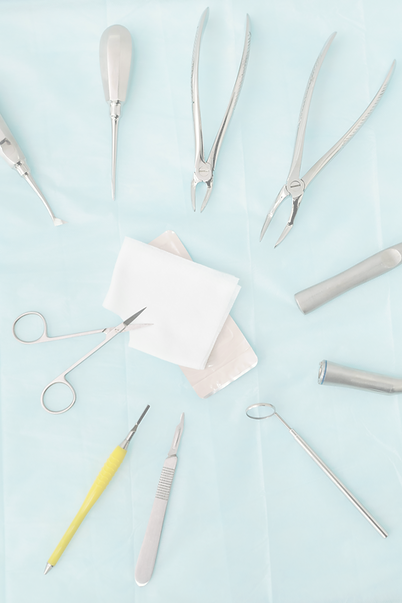
Maxillofacial Surgery
Maxillofacial surgery was developed to treat conditions affecting the bones, soft tissues, and joints of the face. From the removal of skin lesions to the correction of joint dysfunctions, every procedure is guided by careful medical evaluation. Yet when operating on what defines us, attention to aesthetics is not a detail: it is an essential part of the treatment.
1
Removal of skin and subcutaneous growths
Surgical removal of nevi, cysts, lipomas and skin carcinomas is a fundamental act both in the preventive and therapeutic fields. The interventions are performed with minimally invasive techniques and incisions oriented along the lines of skin tension, to guarantee optimal healing and an aesthetic result.
2
Keloid Treatment
Hypertrophic or pathological scar formations can be painful, itchy and aesthetically dysfunctional. The combination of intralesional infiltration and surgical excision improves the appearance and local comfort.
3
Scar Revision
Scar revision is indicated when the healing of a previous wound has generated an aesthetically or functionally unsatisfactory outcome. The procedure may involve retracting, asymmetric, hypertrophic or poorly positioned scars.
4
Xanthelasma removal
Xanthelasma is a benign formation located mainly on the eyelids. The procedure is performed under local anesthesia with particular attention to the thinness and mobility of the periorbital tissue. The treatment aims to completely eliminate the lesion with minimal aesthetic impact.
5
Earlobe reconstruction
Earlobe reconstruction is indicated in cases of elongated, cracked or deformed earlobes caused by trauma, piercings or earrings. The procedure, performed under local anesthesia, involves regularizing the edges and directly suturing the tissue, with excellent aesthetic and healing results.
6
Canthoplasty and correction of ectropion and entropion
When the eyelid loses tone or is positioned abnormally, the eye is affected: it may become more sensitive, red, tear or irritated easily.
Canthoplasty is a targeted procedure that allows you to restore support and stability to the eyelid, correcting its position and improving the protection of the eye.
7
Temporomandibular joint disorders
Arthrocentesis is a minimally invasive procedure that involves washing the temporomandibular joint to remove adhesions and inflammation. Indicated in cases of pain, blockages or limited movement, it improves joint function without incisions, under local anesthesia.
8
Lingual and Labial Frenulectomy
Frenulotomy is a simple and minimally invasive procedure indicated in cases of short lingual or labial frenulum. When too tight, the frenulum can limit the movement of the tongue or lip, interfering with phonation, swallowing or oral hygiene.
The correction quickly improves oral function and, in children, can promote more harmonious development of speech and dentition.
9
Reduction and synthesis of facial massif fractures
The procedure is aimed at restoring the anatomical and functional integrity of the facial bones following trauma. Through precise surgical techniques and the use of miniaturized plates and screws, the damaged bone structures are realigned, preserving aesthetics, symmetry and functionality.
10
Treatment of Facial Nerve Injuries
Facial paralysis involves a partial or complete loss of movement of the muscles on one side of the face, with important functional and aesthetic repercussions. Through an integrated and specialized approach, it is possible to intervene to improve symmetry, muscle tone and residual mobility, reducing the visual impact and improving the patient's quality of life.
11
Treatment of Inferior Alveolar and Lingual Nerve Injuries
In some cases, following tooth extractions, implants or trauma, lesions may occur in the nerves that transmit sensation to the tongue, lip or chin.
These conditions manifest themselves with tingling, numbness, or partial loss of sensation. Through a specialist evaluation, it is possible to identify the nature of the damage and, when indicated, surgical intervention to improve function.
Where
Corso Valentino, 167, Casale Mto.
| Milan |
| Asti |


